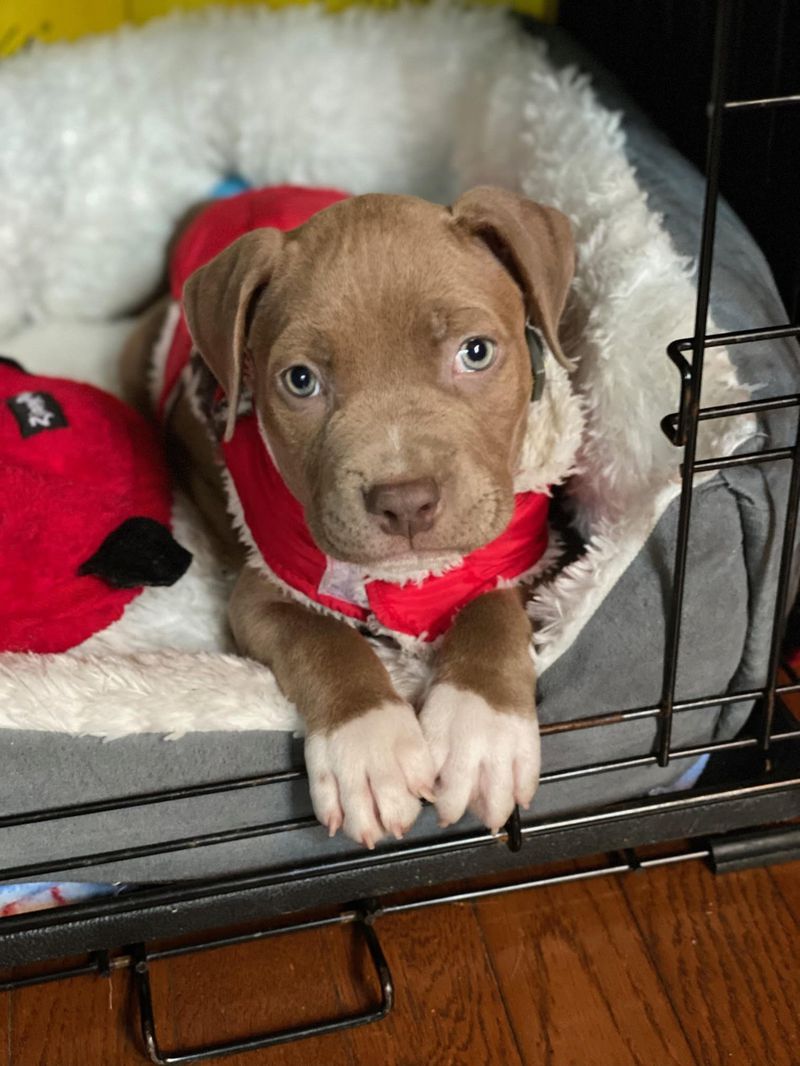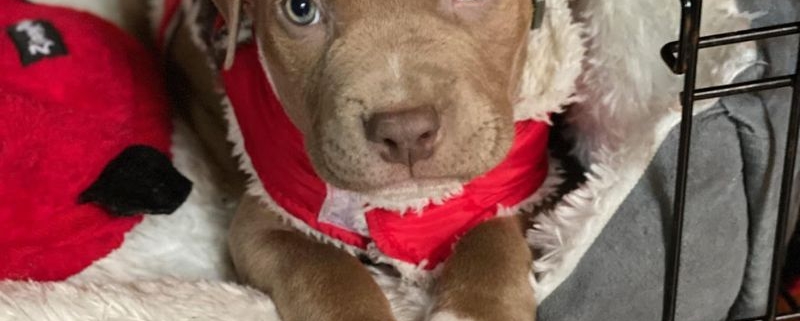Crate Training a Beneficial Tool
Animal Connections
Published by the Virginian Pilot on 01-06-2021
Written by Lacy Kuller, Chesapeake Humane Society Executive Director
All three of my dogs were adults when I adopted them, and they all lived their lives outside before being welcomed into my home. One of them was pretty scared of everything in life when I first took her in, and the other two were not housebroken at all. I mention that only to prove that crate training can be used with dogs of any age and with a wide range of backgrounds.
In their first six months or so with me, I implement crate training methods consistently. Usually, it’s harder on me than it is on them.
Having a routine and remaining consistent with any training is often the most important factor. It’s also hard for me because when I say good night to them and tuck them into their crate, I secretly wish they were snuggled up with me in my bed. But it’s worth it. The result is that they see their crates, or their dens, as a safe place.
And don’t be fooled because I work with animals — my dogs are not the most trained or well-behaved dogs. Thankfully, they were housebroken pretty quickly, but they bark more than I’d like (they are hound dogs), they jump up on people when they are excited to see them, and my bloodhound will dig a giant hole in my backyard if I turn my back for too long while he’s outside. I’m not perfect, and neither are they.
After the initial training is over, I leave their crate doors open for them to come and go as they please. To this day, some nights they snuggle up with me in bed and some nights they curl up in their crates — both of those scenarios make me happy.

Foster puppy from Portsmouth Humane Society working on crate training!
They rarely get closed in the crate, but if I do close them in, they are comfortable, not anxious, and I know they are safe. If a thunderstorm rolls in or if fireworks can be heard, I often find my dogs in their crates that’s where they feel protected. If I have a contractor in the house who isn’t fond of dogs, I know I can put my dogs in their crates without causing them stress.
I never use a crate as punishment. Their association with the crate should always be positive. I feed my dogs in their crate, which helps with creating a rewarding experience, especially if you have a food-motivated dog.
I have certain toys that only come out when they are in the crate, making it exciting for them. The toys I use for crate training are very durable, like a large Kong or a Nylabone, so I know they won’t destroy and swallow parts of a toy while unattended. I never use plush toys or rope bones unattended as those could easily be ingested and lead to a harmful blockage.
I’m careful to close my dogs in their crates for different scenarios so they don’t associate going into the crate with me leaving the house. So when they are being trained, they’ll periodically have crate time for 20-30 minutes at a time while I’m still home. This helps to build their independence and can help with or prevent separation anxiety — especially since many of us are home more due to the COVID-19 pandemic.
I will mention, I have worked with dogs that just don’t do well in a crate. Despite working with them in a positive way, the crate causes them so much anxiety that they are physically harming themselves in an attempt to escape. In my experience, this has been with dogs that have extreme separation anxiety or have a negative association with a crate from previous experiences.
Thankfully, this is not the case with most dogs, but it is something to keep in mind. If you are having issues to that extent with your dog, hopefully you are working with a behaviorist and your veterinarian on that behavior.
If your dog continues to be anxious in a wire crate, try covering half of the crate with a blanket or try using a more enclosed airline crate. For some dogs, this simple trick makes a world of difference in making them feel comfortable, so it’s worth trying if you are struggling with crate training.
Lacy Shirey is executive director of the Chesapeake Humane Society. She can be reached at director@chesapeakehumane.org.



